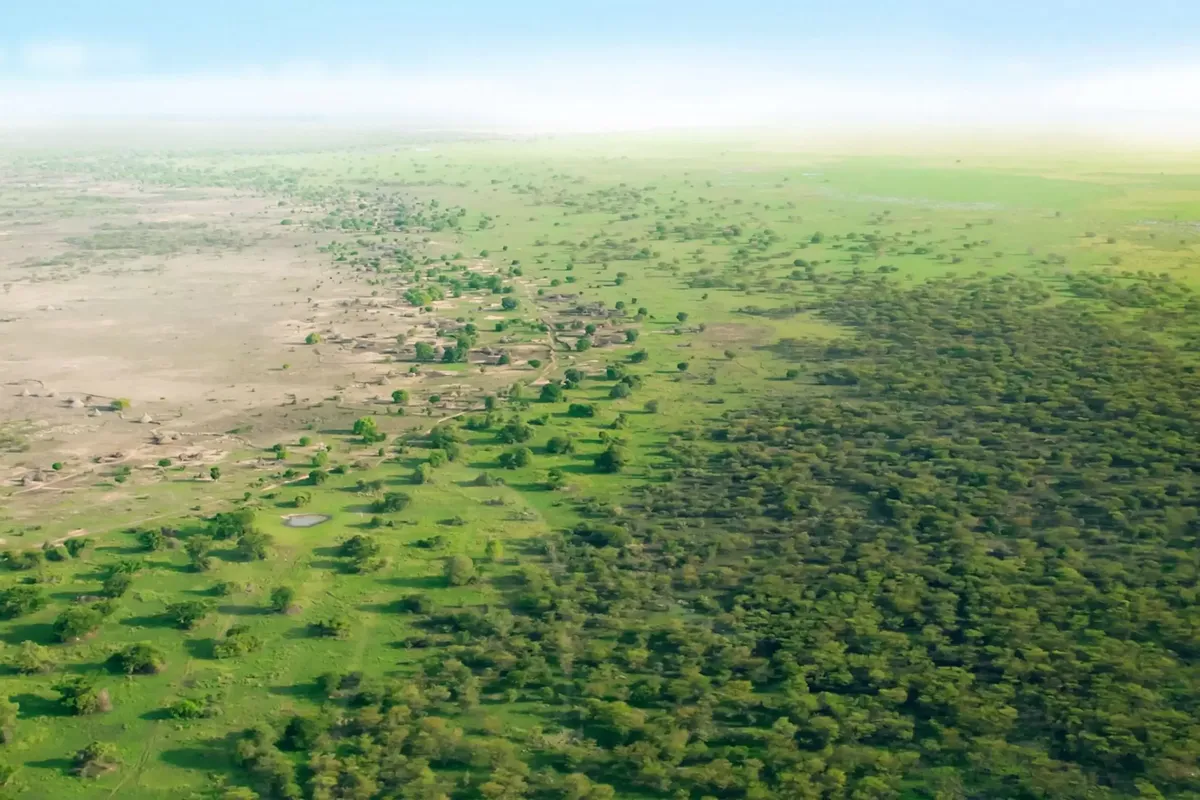Harriet Brewis
Apr 22, 2024

Google has marked Earth Day 2024 with a series of aerial photos
(Google/Airbus, CNES/Airbus, Copernicus, Maxar Technology/USGS/NASA Landsat)
The world is in a state of turmoil, with wars in the Middle East, Ukraine and Africa and millions suffering from malnutrition and disease.
It therefore seems more pressing than ever to consider the future of our planet, and the steps we must take to protect it and our future generations.
Today (April 22) marks Earth Day, the annual, global event calling for support for the environment.
This year’s theme is “Planet vs. Plastics”, with the organisers demanding a “60 per cent reduction in the production of ALL plastics by 2040.”
To mark the occasion, Google has dedicated its Doodle to Earth Day, by transforming its letters into a series of six aerial photos.
In a dedicated blurb, the search engine says these images “showcase some of the places across the globe where people, communities and governments work every day to help protect the planet’s natural beauty, biodiversity and resources.”
Here, we take a look at these photos, and what each of them represents, according to Google.:
G: Turks and Caicos Islands

“The islands are home to important biodiversity areas with conservation efforts aimed at addressing ongoing environmental challenges, including protecting natural resources and reefs and restoring endangered species like the Turks and Caicos Islands rock iguana."
O: Scorpion Reef National Park, Mexico

“Also known as Arrecife de Alacranes, this is the largest reef in the southern Gulf of Mexico and UNESCO biosphere reserve. The marine protected area serves as a refuge for complex coral and several endangered bird and turtle species.”
O: Vatnajökull National Park, Iceland

“Established as a national park in 2008 after decades of advocacy, this UNESCO World Heritage Site protects the ecosystem in and around Europe’s largest glacier. The mix of volcanoes and glacial ice produce rare landscapes and flora.”
G: Jaú National Park, Brazil

“Also known as Parque Nacional do Jaú, this is one of South America’s largest forest reserves and a UNESCO World Heritage Site. Located in the heart of the Amazon rainforest, it protects a huge range of species, including the margay, jaguar, giant otter, and the Amazonian manatee.”
L: Great Green Wall, Nigeria

“Started in 2007, this African Union-led initiative is restoring land affected by desertification across the width of Africa, planting trees and other vegetation while implementing sustainable land management practices. This also provides the people and communities in the area with increased economic opportunities, food security, and climate resilience.”
E: Pilbara Islands Nature Reserves, Australia

“Located by one of the Pilbara Island Nature Reserves, one of 20 nature reserves in Australia that help protect fragile ecosystems, increasingly rare natural habitats, and a number of threatened or endangered species—including multiple species of marine turtles, shorebirds, and seabirds.”
Explaining its choices, Google says: “These examples offer the promise of hope and optimism, but also remind us that there's much more to do to address the climate crisis and biodiversity loss.”
Happy Earth Day, everyone.
Sign up for our free Indy100 weekly newsletter
Have your say in our news democracy. Click the upvote icon at the top of the page to help raise this article through the indy100 rankings
Top 100
The Conversation (0)













